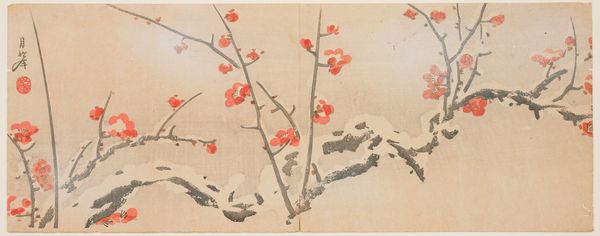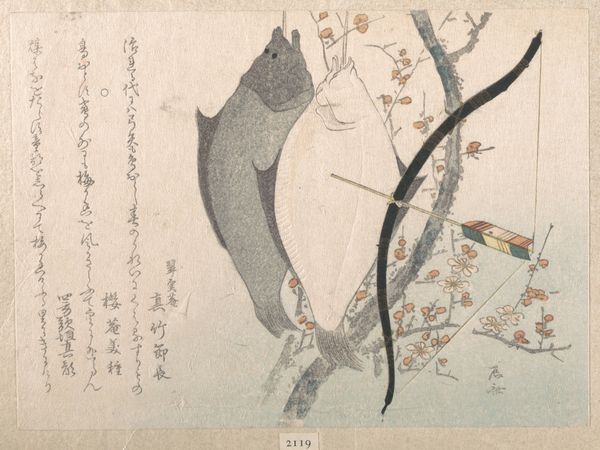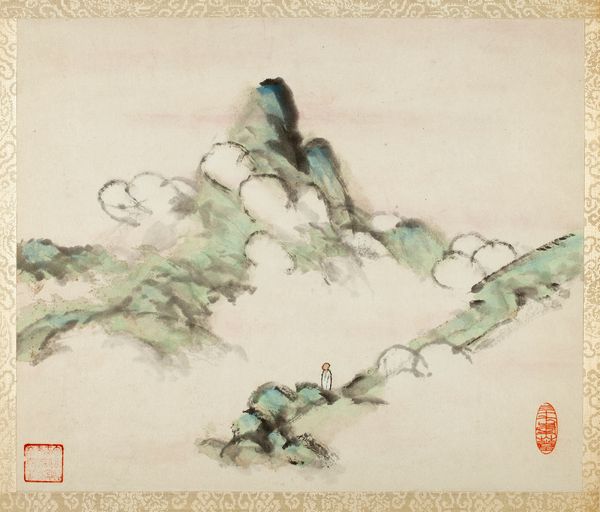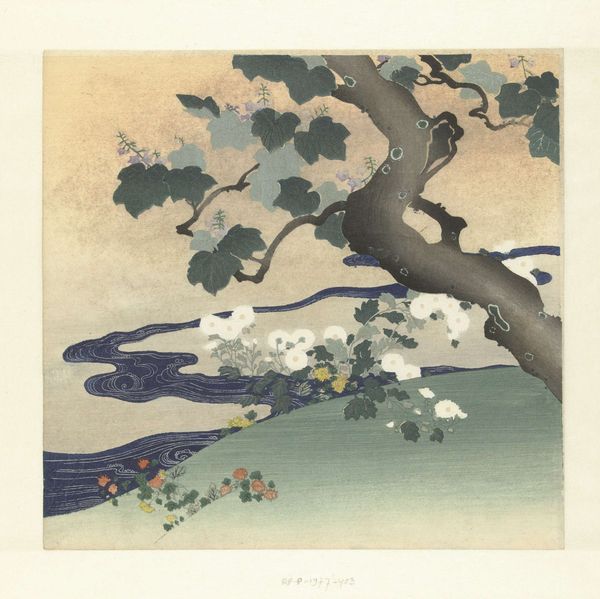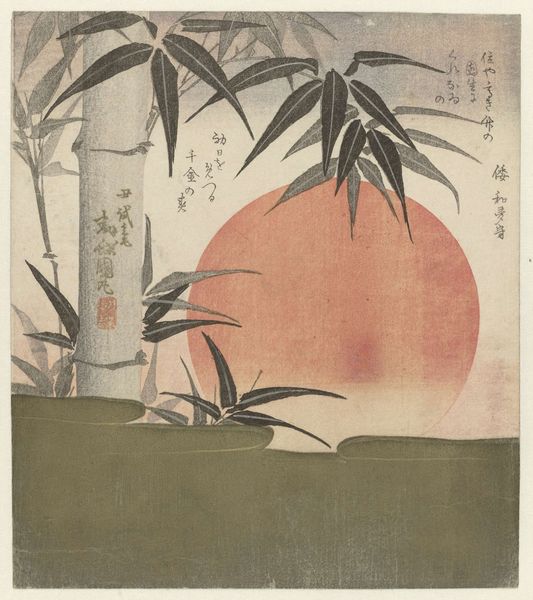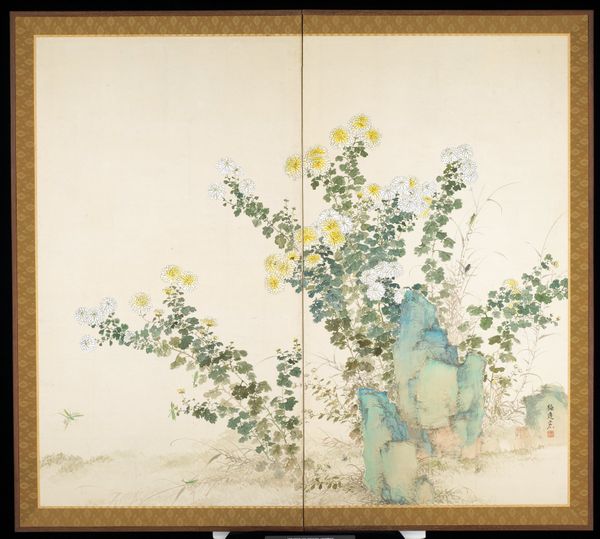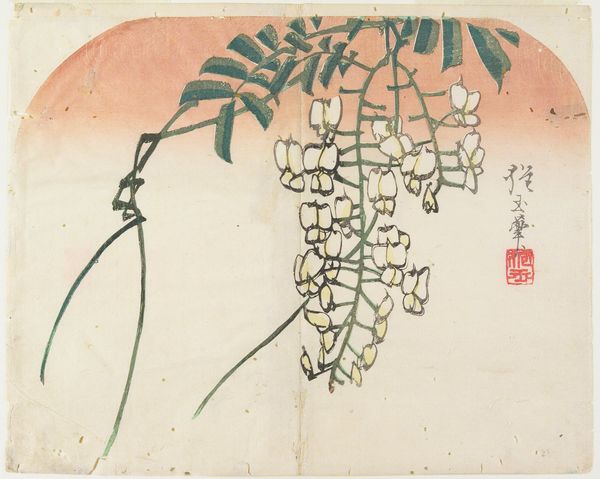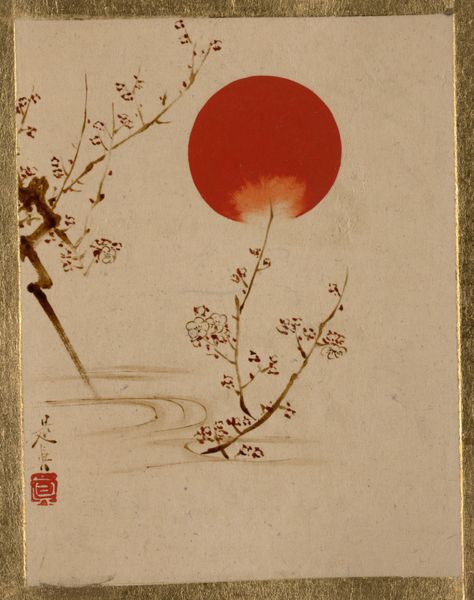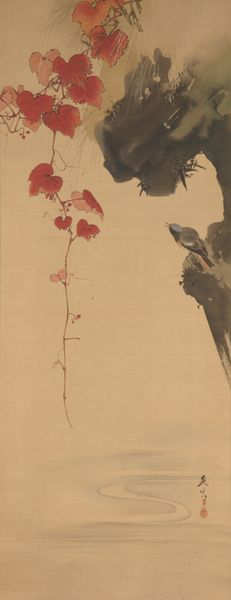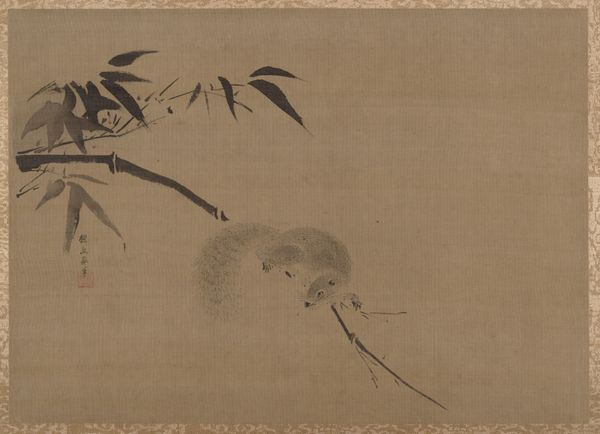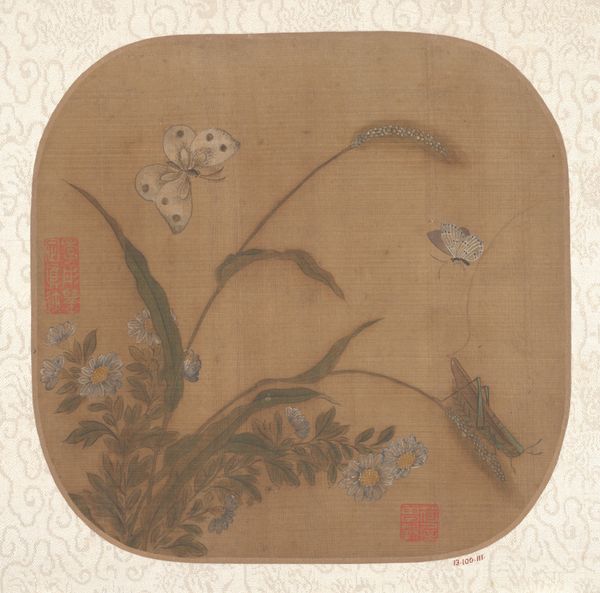
Dimensions: 9 1/4 × 9 13/16 in. (23.5 × 24.92 cm) (sheet)
Copyright: No Copyright - United States
Editor: This is "No. 57," a woodblock print created in 1904 by Otake Chikuha. The lithographic quality combined with watercolor elements lends it such a serene feeling. What's your interpretation? Curator: The print reflects the Ukiyo-e tradition evolving in the Meiji period, a period of intense Westernization. Notice the flattened perspective, the strong, sinuous line, and blocks of color; these are key features of Ukiyo-e. But look closer: how do you think the social and political landscape of the time might have impacted this image? Editor: Well, it seems very quiet and introspective, almost as if turning inward away from the societal changes of the time. Maybe it's a commentary by contrasting with the era's focus on modernization? Curator: Precisely. While Japan embraced Western technologies and political systems, artists like Chikuha were reinterpreting and preserving elements of their cultural heritage, and catering to conservative factions resisting reforms. Landscape prints provided a powerful vehicle for promoting ideas about Japan’s unique identity and heritage. How effective do you feel it is in promoting those ideals? Editor: I can certainly see how this print might offer a gentle reminder of the enduring beauty of nature amidst rapid modernization. It's like saying, "Don't forget who we are." I appreciate the socio-political layer to a seemingly quiet landscape. Curator: Indeed. Understanding art within its historical and political context unveils so much about its role in society, and helps to clarify its significance and how the artist contributes to social dialogue.
Comments
No comments
Be the first to comment and join the conversation on the ultimate creative platform.

